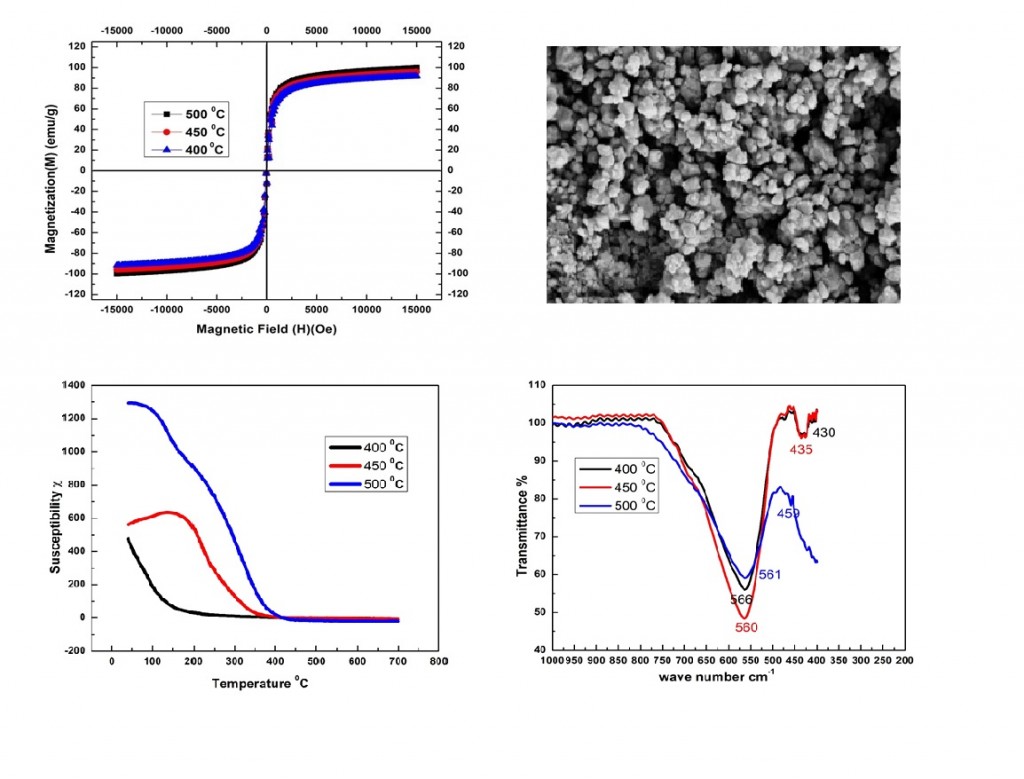NANOSYSTEMS: PHYSICS, CHEMISTRY, MATHEMATICS, 2020, 11 (4), P. 434–443
Temperature dependent structural, morphological, FTIR, optical, magnetic properties of NiMgZn ferrites
T. Vidya Sagar – Dept. of Physics, Sri Krishnadevaraya University, Anantapuramu-515003, A.P, India; tvidyasagar83@gmail.com
T. Subba Rao – Dept. of Physics, Sri Krishnadevaraya University, Anantapuramu-515003, A.P, India
N. Raghuram – Dept. of Physics, Sri Krishnadevaraya University, Anantapuramu-515003, A.P, India
NiMgZn ferrites with chemical composition Ni0.2Mg0.3Zn0.5Fe2O4 nanomaterials were synthesized using the sol-gel technique. The various properties of the samples prepared at three different calcination temperatures (T) of 400, 450 and 500 °C/5 hr were studied. The X-ray diffraction study confirmed the single-phase cubic spinel structure (JCPDS 08-0234) for 400 & 500 °C calcined samples and with Fe2O3 as an impurity phase for 450 °C calcined sample with lattice parameter values 8.296 to 8.376 A° . The surface morphology and EDX spectra observed with field emission scanning electron microscope (FESEM) images confirmed the nano-sized irregular shaped grain development at low calcination temperatures. The force constants are determined using FTIR spectroscopy confirmed the M–O bonds present in ferrites. Optical band gap properties studied and found that NiMgZn ferrites have band gaps in semiconducting region from 1.68 to 1.75 eV. The susceptibility-temperature (χ-T) dependence is studied using a Bartington MS2B Dual Frequency instrument in heating and cooling modes and magnetic transition temperature (Tc) were determined. The highest magnetic susceptibility of 1293 is observed for 500 °C calcined material. By using VSM, the M–H loop, magnetic properties are studied, which showed that this material is ferrimagnetic. Also, the magnetic moments and saturation magnetizations (Ms) are calculated. The maximum saturation magnetization 97.20 emu/g is observed for 400 °C calcined sample.
Keywords: ferrites, sol-gel, X-ray diffraction, magnetic properties.
DOI 10.17586/2220-8054-2020-11-4-434-443
